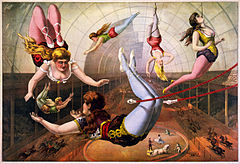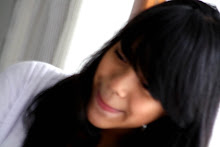 have you know clowns, animals, masks, jokes? I'm sure you've know. yes it is the few words we can find at the circus. but do you know the history of the circus? If you are not know yet, let me tell you about the history of the circus.
have you know clowns, animals, masks, jokes? I'm sure you've know. yes it is the few words we can find at the circus. but do you know the history of the circus? If you are not know yet, let me tell you about the history of the circus.One day in Ancient Rome, the circus was a building for the exhibition of horse and chariot races, equestrian shows, staged battles, displays featuring trained animals, jugglers and acrobats. The circus of Rome is thought to have been influenced by the Greeks, with chariot racing and the exhibition of animals as traditional attractions. The Roman circus consisted of tiers of seats running parallel with the sides of the course, and forming a crescent around one of the ends. The lower seats were reserved for persons of rank; there were also various state boxes, e.g. for the giver of the games and his friends. In Ancient Rome the circus was the only public spectacle at which men and women were not separated. The Latin word circus comes from the Greek word kirkos, meaning "circle" or "ring"
Circus Maximus was the first circus in Rome, in the valley between the Palatine and Aventine hills. It was constructed during the monarchy and, at first, built completely from wood. After being rebuilt several times, the final version of the Circus Maximus could seat 250,000 people; it was built of stone and measured 400 m in length and 90 m in width. Next in importance to the Circus Maximus in Rome were the Circus Flaminius and the Circus Neronis, from the notoriety which it obtained through the Circensian pleasures of Nero. A fourth, the Circus of Maxentius, was constructed by Maxentius; the ruins of this circus have helped archaeologists to reconstruct the Roman circus.
For some time after the fall of Rome, Europe lacked a large and animal-rich circus. Itinerant showmen travelled the fair grounds of Europe. Animal trainers and performers are thought to have exploited the nostalgia for the Roman circus, traveling between towns and performing at local fairs. Another possible link between the Roman and modern circus could have been bands of Gypsies who appeared in Europe in the 14th century and in Britain from the 15th century, bringing with them circus skills and trained animals.

The modern concept of a circus as a circular arena surrounded by tiers of seats, for the exhibition of equestrian, acrobatic and other performances seems to have existed since the late 18th century.[3] The popularity of the circus in England may be traced to that held by Philip Astley in London. The first performance of his circus is said to have been held on January 9, 1768. One of Astley's major contributions to the circus was bringing trick horse-riding into a ring, though Astley referred to it as the Circle. Later, to suit equestrian acts moving from one circus to another, the diameter of the circus ring was set at 42 feet (13 m), which is the size of ring needed for horses to circle comfortably at full gallop. Astley never called his performances a 'circus'; that title was thought up by his rival John Hughes, who set up his Royal Circus a short distance from Astley's 'Amphitheatre of Equestrian Arts' in Lambeth, London. When Astley added tumblers, tightrope-walkers, jugglers, performing dogs, and a clown to fill time between his own demonstrations, he created a modern circus.[4][5]
Astley was followed by Andrew Ducrow, whose feats of horsemanship had much to do with establishing the traditions of the circus, which were perpetuated by Henglers and Sangers celebrated shows in a later generation. In England circuses were often held in purpose built buildings in large cities, such as the London Hippodrome, which was built as a combination of the circus, the menagerie and the variety theatre, where wild animals such as lions and elephants from time to time appeared in the ring, and where convulsions of nature such as floods, earthquakes and volcanic eruptions have been produced with an extraordinary wealth of realistic display. Antonio Franconi, the founder of the French circus, is credited by many to be a co-creator of the modern circus, along with Philip Astley.

The Englishman John Bill Ricketts brought the first modern circus to the United States. He began his theatrical career with Hughes Royal Circus in London in the 1780s, and came over from England in 1792 to establish his first circus in Philadelphia. The first circus building in the U.S opened on April 3, 1793 in Philadelphia, where Ricketts gave America's first complete circus performance.[4][6] George Washington attended a performance there later that season.[7]. In the Americas of the first two decades of the 19th century, The Circus of Pepin and Breschard toured from Montreal to Havana, building circus theatres in many of the cities they visited. Later the establishments of Purdy, Welch & Co., and of van Amburgh gave a wider popularity to the circus in the United States. In 1825 Joshuah Purdy Brown was the first circus owner to use a large canvas tent for the circus performance. Circus pioneer Dan Rice was probably the most famous circus and clown pre-Civil War, popularizing such expressions as "The One-Horse Show" and "Hey, Rube!". The American circus was revolutionized by P. T. Barnum and William Cameron Coup, who launched P. T. Barnum's Museum, Menagerie & Circus, a traveling combination of animal and human oddities, the exhibition of humans as a freak show or sideshow was thus an American invention. Coup was also the first circus entrepreneur to use circus trains to transport the circus from town to town; a practice that continues today and introduced the first multiple ringed circuses.
In 1840 the equestrian Thomas Cooke returned to England from the United States, bringing with him a circus tent. Three important circus innovators were Italian Giuseppe Chiarini, and Frenchmen Louis Soullier and Jacques Tourniaire, whose early travelling circuses introduced the circus to Latin America, Australia, South East Asia, China, South Africa and Russia. Soullier was the first circus owner to introduce Chinese acrobatics to the European circus when he returned from his travels in 1866 and Tourniaire was the first to introduce the performing art to Ranga where it became extremely popular. Following Barnum's death his circus merged with that of James Anthony Bailey, and travelled to Europe as The Barnum & Bailey Greatest Show On Earth where it toured from 1897 to 1902, impressing other circus owners with its large scale, its touring techniques including the tent and circus train and the combination of circus acts, zoological exhibition and the freak show. This format was adopted by European circuses at the turn of the 20th century.
The influence of the American circus brought about a considerable change in the character of the modern circus. In arenas too large for speech to be easily audible, the traditional comic dialog of the clown assumed a less prominent place than formerly, while the vastly increased wealth of stage properties relegated to the background the old-fashioned equestrian feats, which were replaced by more ambitious acrobatic performances, and by exhibitions of skill, strength and daring, requiring the employment of immense numbers of performers and often of complicated and expensive machinery.
In 1919, Lenin, head of the USSR, expressed a wish for the circus to become 'the people's art-form', given facilities and status on a par with theatre, opera and ballet. The USSR nationalized the Soviet circuses. In 1927 the State University of Circus and Variety Arts, better known as the Moscow Circus School was established where performers were trained using methods developed from the Soviet gymnastics program. When the Moscow State Circus company began international tours in the 1950s, its levels of originality and artistic skill were widely applauded, and the high standard of the Russian State circus continues to this day.
Circuses from China, drawing on Chinese traditions of acrobatics, like the Chinese State Circus are also popular touring acts. The International Circus Festival of Monte-Carlo[8] has been held in Monte Carlo since 1974 and was the first of many international awards for circus performers. In the 1960s and 1970s, the circus began to lose popularity as the general public became more interested in alternative forms of entertainment such as movies, music, and TV shows. Some circuses stayed afloat by merging with other circus companies. However a good number of old-fashioned traveling circuses with their usual mixture of acrobat, clown and animal acts is still active in various parts of the world ranging from small family enterprises on the edge of survival to the three ring extravaganzas like Vazquez Hermanos Circus in Mexico.[9] Other companies found new ways to draw in the public with innovative new approaches to the circus form itself.
I hope this can add to your knowledge u,u ok byeeesource : wikipedia
with slightly modified by me



Tidak ada komentar:
Posting Komentar